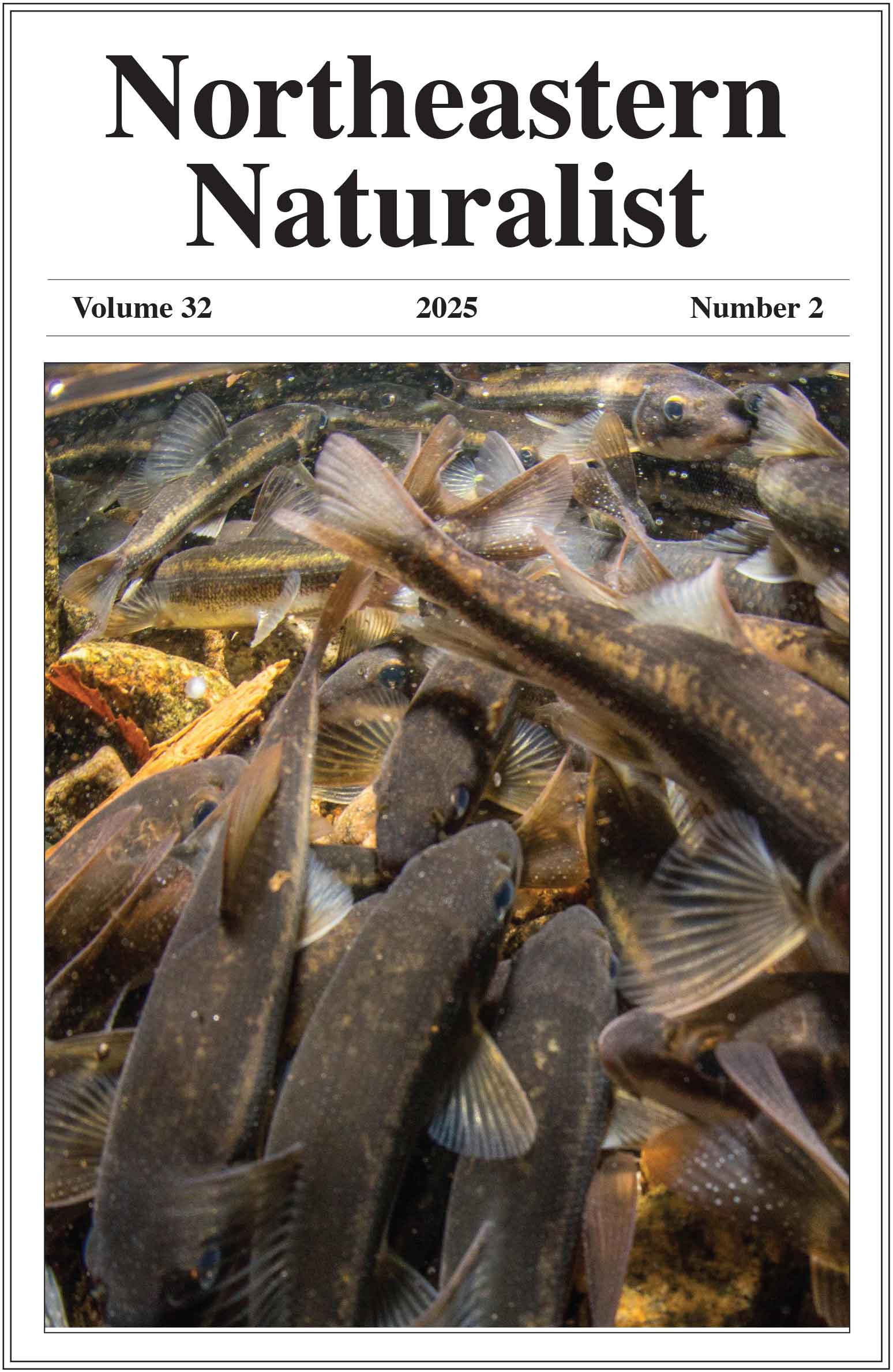One Century Later: Species Richness and Temporal Turnover in Mammals and Amphibians on a Small, Temperate Island
Giorgia G. Auteri1,2,*, Corrie J. Navis1,3, Katherine Greenwald1, and Allen Kurta1
1Department of Biology, Eastern Michigan University, Ypsilanti, MI 48197.2Missouri State University, Springfield, MO 65897. 3Warnell School of Forestry and Natural Resources, University of Georgia, Athens, GA 30602. *Corresponding author.
Northeastern Naturalist, Volume 31, Issue 4 (2024): 435–457
First published early online: 4 December 2024
Abstract
Islands can be proxies for understanding species-occupancy dynamics—like rates of immigration, extirpation, and persistence—in a world of increasingly isolated habitat patches. These dynamics have been investigated extensively at short and long timescales (e.g., a few versus tens of thousands of years), but intermediate periods are less frequently considered. Here, we report a resurvey of the amphibians and mammals of Charity Island, in Saginaw Bay of Lake Huron, ~100 years after the island was first surveyed in 1910. We conducted surveys via visual and auditory monitoring, as well as targeted trapping. We found 7 species not previously documented on the island, although it is likely that only Tamias striatus (Eastern Chipmunk), Lithobates catesbeianus (= Rana catesbeiana) (American Bullfrog), and Hyla versicolor (Gray Treefrog) are genuinely new arrivals. In contrast, the previously detected Lepus americanus (Snowshoe Hare), Sylvilagus floridanus (Eastern Cottontail), Anaxyrus americanus (Eastern American Toad), and Lithobates (= Rana) palustris (Pickerel Frog) were not detected in our surveys. These findings indicate that modest but detectable species turnover occurs on isolated, high-latitude islands, even among otherwise common species.
![]() Download Full-text pdf (Accessible only to subscribers. To subscribe click here.)
Download Full-text pdf (Accessible only to subscribers. To subscribe click here.)
Access Journal Content
Open access browsing of table of contents and abstract pages. Full text pdfs available for download for subscribers.
Issue-in-Progress: Vol. 32 (3) ... early view
Check out NENA's latest monograph and Special Issue:













 The Northeastern Naturalist is a peer-reviewed journal that covers all aspects of natural history within northeastern North America. We welcome research articles, summary review papers, and observational notes.
The Northeastern Naturalist is a peer-reviewed journal that covers all aspects of natural history within northeastern North America. We welcome research articles, summary review papers, and observational notes.